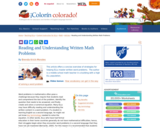
This article offers a concise overview of strategies for helping ELLs master written word problems. The author is a middle school math teacher in a building with a high ELL population.

This article offers a concise overview of strategies for helping ELLs master written word problems. The author is a middle school math teacher in a building with a high ELL population.
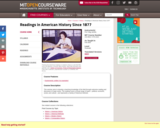
Aims to develop a teaching knowledge of the field through extensive reading and discussion of major works. The reading covers a broad range of topics -- political, economic, social, and cultural -- and represents a variety of historical methods. Students make frequent oral presentations and prepare a 20-page review essay.
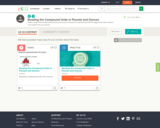
This short video and interactive assessment activity is designed to teach fourth graders about reading the compound units in pounds and ounces.
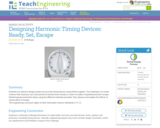
Students are asked to design simple yet accurate timing devices using limited supplies. The challenge is to create a device that measures out a time period of exactly three minutes in order to enable a hypothetical prison escape. Student groups brainstorm ideas using the different materials provided. They observe and explain the effects of conservation of energy.

Students observe an in-classroom visual representation of a volcanic eruption. The water-powered volcano demonstration is made in advance, using sand, hoses and a waterballoon, representing the main components of all volcanoes. During the activity, students observe, measure and sketch the volcano, seeing how its behavior provides engineers with indicators used to predict an eruption.
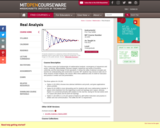
This course covers the fundamentals of mathematical analysis: convergence of sequences and series, continuity, differentiability, Riemann integral, sequences and series of functions, uniformity, and the interchange of limit operations. It shows the utility of abstract concepts and teaches an understanding and construction of proofs. MIT students may choose to take one of three versions of Real Analysis; this version offers three additional units of credit for instruction and practice in written and oral presentation.The three options for 18.100:Option A (18.100A) chooses less abstract definitions and proofs, and gives applications where possible.Option B (18.100B) is more demanding and for students with more mathematical maturity; it places more emphasis from the beginning on point-set topology and n-space, whereas Option A is concerned primarily with analysis on the real line, saving for the last weeks work in 2-space (the plane) and its point-set topology.Option C (18.100C) is a 15-unit variant of Option B, with further instruction and practice in written and oral communication. This fulfills the MIT CI requirement.

This half-semester course introduces and surveys the major public capital market real estate vehicles, REITs and MBS (with primary emphasis on CMBS). Some background is also included in basic modern portfolio theory and equilibrium asset pricing. This course is primarily designed to provide MSRED students with a basic introduction to the public capital market sources of financial capital for real estate, and how those markets value such capital investments.
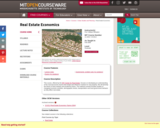
This course, offered by the MIT Center for Real Estate, focuses on developing an understanding of the macroeconomic factors that shape and influence markets for real property. We will develop the theory of land markets and locational choice. The material covered includes studies of changing economic activities, demographic trends, transportation and local government behavior as they affect real estate.
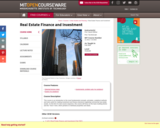
This course is an introduction to the most fundamental concepts, principles, analytical methods and tools useful for making investment and finance decisions regarding commercial real estate assets. As the first of a two-course sequence, this course will focus on the basic building blocks and the "micro" level, which pertains to individual properties and deals.
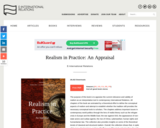
The purpose of this book is to appraise the current relevance and validity of realism as an interpretative tool in contemporary International Relations. All chapters of the book are animated by a theoretical effort to define the conceptual aspects of realism and attempt to establish whether the tradition still provides the necessary conceptual tools to scholars. The chapters address important issues in contemporary world politics through the lens of realist theory such as the refugee crisis in Europe and the Middle East; the war against ISIS; the appearance of non-state actors and outlaw agents; the rise of China; cyberwarfare; human rights and humanitarian law. The collection also provides insights on some of the theoretical tenets of classical and structural realism. Overall, the collection shows that, in spite of its many shortcomings, realism still offers a multifaceted understanding of world politics and enlightens the increasing challenges of world politics.
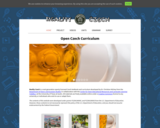
Reality Czech is an openly licensed online curriculum for beginning to intermediate-level Czech students. The course aims to be a highly communicative introduction to Czech language and culture and includes over 240 interview compilation videos shot in the style of a reality TV show on a variety of everyday topics such as daily schedule, hobbies, food and drink, studies, holidays, health, weather, and more.
The name Reality Czech reflects not only the centrality of these interviews to the curriculum, but also the textbook’s focus on the vocabulary and constructions Czechs frequently use to talk about everyday topics. The entire course has been shaped by the language used in the interview videos as well as openly licensed content sourced from the internet.
Each of the 10 units follows a sequence of pre-class, in-class, and post-class activities ideal for a flipped classroom:
- Pre-class activities such as Quizlet vocabulary activities, video and audio with comprehension questions, culture notes, and grammar exercises introduce students to new language.
- An activity book for in-class use provides all of the resources an instructor needs to create a communicative classroom experience focused around task-based learning, such as games and activities.
- Post-class activities use both exercises and authentic multimedia texts as a catalyst for students to create language.
The materials all exist natively online in flexible formats such as Google Docs, and are licensed with a Creative Commons Attribution-ShareAlike license, allowing the curriculum to be easily adapted to 100% online delivery.
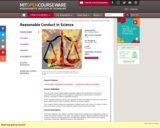
To provide instruction and dialog on practical ethical issues relating to the responsible conduct of human and animal research in the brain and cognitive sciences. Specific emphasis will be placed on topics relevant to young researchers including data handling, animal and human subjects, misconduct, mentoring, intellectual property, and publication.
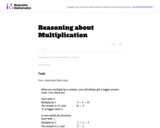
This task helps students understand that when you multiply by a number you always get a bigger number.

The three tasks in this set are not examples of tasks asking students to compute using the standard algorithms for multiplication and division because most people know what those kinds of problems look like. Instead, these tasks show what kinds of reasoning and estimation strategies students need to develop in order to support their algorithmic computations.
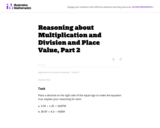
The three tasks (including part 1 and part 3) in this set are not examples of tasks asking students to compute using the standard algorithms for multiplication and division because most people know what those kinds of problems look like. Instead, these tasks show what kinds of reasoning and estimation strategies students need to develop in order to support their algorithmic computations.
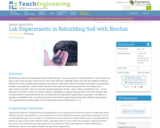
Students learn about soil properties and the effect biochar—charcoal used as a soil amendment—has on three soil types, sand, loam and clay. They test the soils’ water retention capability before and after the addition of biochar. During the activity, student teams prepare soil mixtures, make observations (including microscopic examinations), compare soil properties, conduct water retention tests, take and record measurements, and analyze their observations and data. They see how the physical properties of soils—color, texture, and particle size—can be indicators of nutrient content and water retention capabilities to support plant growth. From their findings, they consider biochar’s potential benefits for environmental and agricultural applications, especially in conditions of drought and depleted soils. An activity lab sheet is provided to guide experimental data collection and analysis.
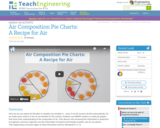
Why do we care about air? Breathe in, breathe out, breathe in... most, if not all, humans do this automatically. Do we really know what is in the air we breathe? In this activity, students use M&M(TM) candies to create pie graphs that show their understanding of the composition of air. They discuss why knowing this information is important to engineers and how engineers use this information to improve technology to better care for our planet.

Students create and decode DNA for mans best friend to observe how variations in DNA lead to the inheritance of different traits. Strips of paper that represent DNA are randomly selected and used to assemble the dog's DNA. Students read the DNA and create a drawing of their pet, and compare it with others in the class to check for similarities and differences.
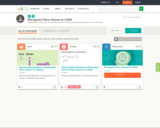
This short video and interactive assessment activity is designed to teach second graders about representing numbers in expanded form i.
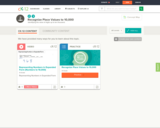
This short video and interactive assessment activity is designed to teach second graders about representing numbers in expanded form II.